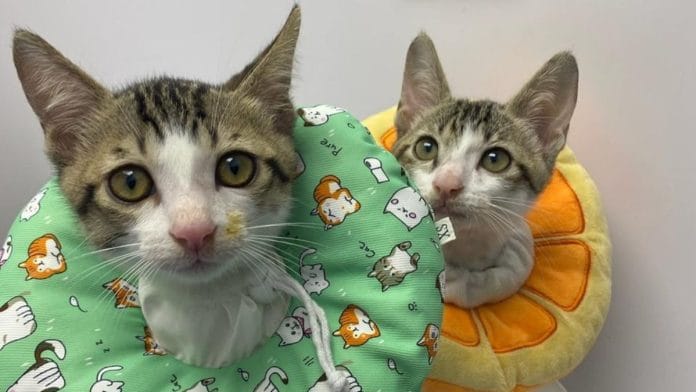Mumbai: Outside the Taj Mahal Palace in Colaba, a black cat is resting. Legs splayed, she’s unmoved by a strategically placed packet of dry fish. A human well-wisher has spent Rs 3,000 on a snack, and she couldn’t care less.
In Bandra, Nina Rawal’s morning routine has an unmissable element. Every morning, like clockwork, she feeds a clowder of felines. They wait for her to come, and she waits for them to finish eating.
“It’s a chakravyuh that has pulled me in, I can’t give it up. It gives me purpose,” she said. “I just feel responsible.”
The strategic placement of food and this unwavering commitment are acts of love, and while Mumbai has always been known for its cat affinity –– the obsession has now transcended cities. It’s entered a cultural and literal landscape that’s long been ruled by dogs. Over the past decade, particularly after Covid-19, there’s been a visible increase in the number of cat parents. At the outset, it’s a phenomenon that shares the dog playbook. There’s a corresponding industry and unwavering obsession. But both cats and their human compatriots are convinced of their uniqueness –– each cat is different. And by virtue of association, so are their minders.
The dawn of pet cats has been accompanied by a subculture. There’s a repository of memes –– woman yelling at a cat, grumpy cat, laughing cat –– which have evolved into a potent mode of communication. This rise has also run parallel to the advent of East Asian cultures in India, also part of the weft of today’s public conversation. There’s an aesthetic at play. Cats, coffee, cafes, and a solitary existence brought on by the weight of urbanity.
In the last decade, the internet has genuinely helped the growth and wild popularity of only three things—fascism, cryptocurrency, and cats.
Varun Grover, writer, lyricist, comedian
“There’s a peculiar generational divide I saw when it came to cats. In India, they weren’t seen as pets. The reasons were strange,” said Devapriya Roy, author and editor of Cat People, an anthology of essays on all things cats. “They’re very independent. While dogs and, of course, livestock are traditionally celebrated in literature and history, cats have only emerged now.”
If popular perception is anything to go by, cats have strayed from mythology –– eschewing narrativisation. But like much else about them, this is misunderstood. In A Book of Indian Cats, art historian BN Goswamy archives the various ways cats have been interpreted in myths and literature.
“There is no getting away, however, from the fact that from most of the stories she emerges, broadly speaking–– in a somewhat negative light,” he wrote in the introduction. Now, this ‘she’ in question is undergoing a revamp.
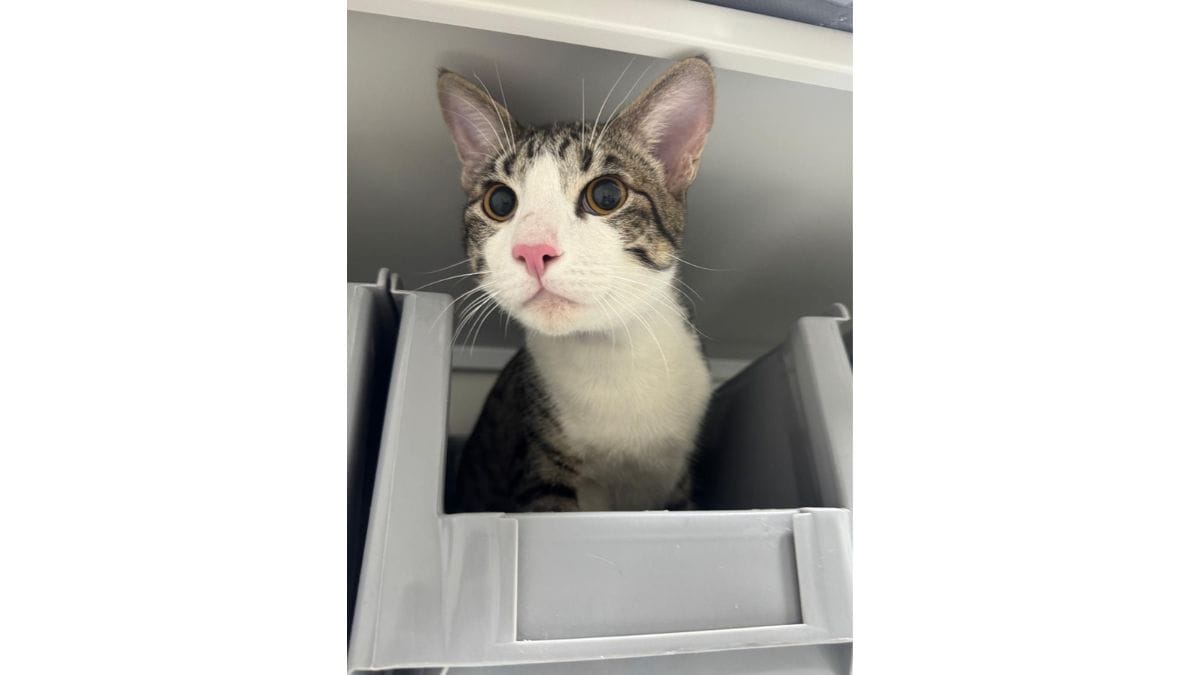
Jude’s search party
“Cats are meticulous and not sloppy. If something is a routine, it has to be routine. They’re more territorial and rigid about things. Ownership is more of a test because of how unpredictable they are. They’re so on their own terms” – Teesta Rawal
Aneela Babar comes from a line of cat lovers, and the measure of her life has been her trail of felines. Lucifer came first, while she was growing up in Rawalpindi. Named after Lady Tremaine’s cat in Cinderella, he used to “beat up” her sister’s German Shepherd, Princess. Now, she has Bibigul and Jude –– and she’s never been this obsessed.
Jude, a tuxedo cat, has a tendency to brood. Babar described him as a miniature Salman Khan. “I think he’s thinking about his next life,” she said. “They changed the way I perceived cats.”
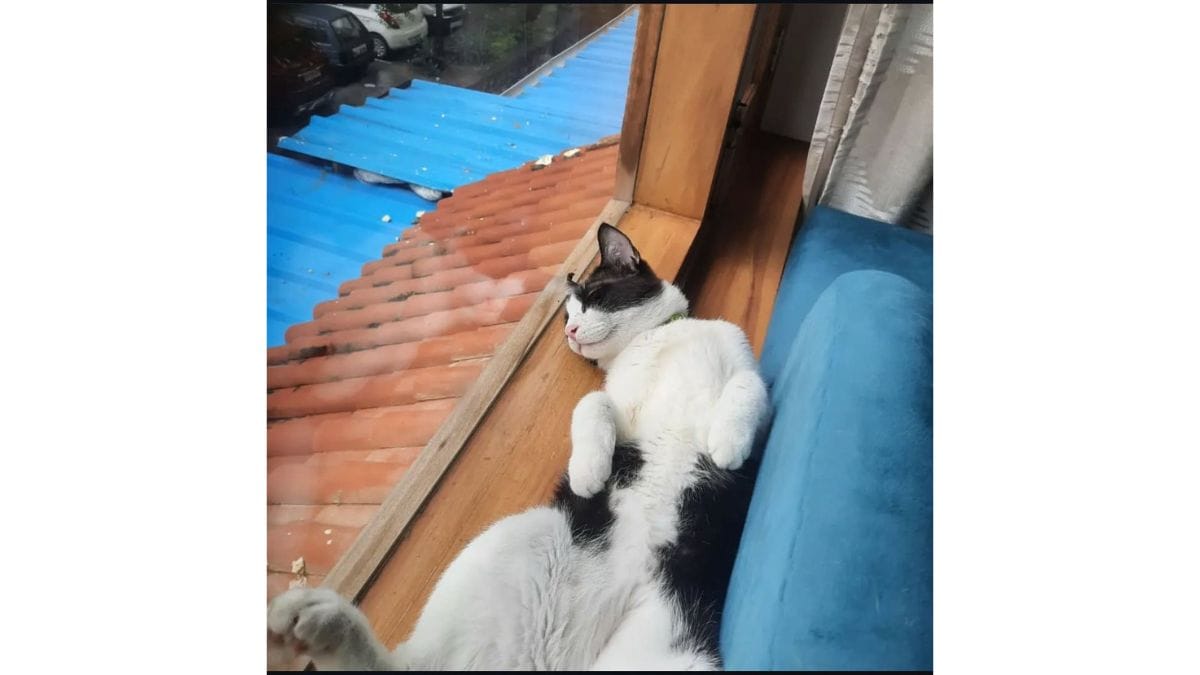
But she can’t know for sure. And to unearth their secrets, she enlisted a cat behaviourist who helped make sense of their anxieties—someone she described as a kind of “cat himself”.
At one point, Jude and Bibigul had to be separated for three months. It was then she realised that Bibigul, who was being more demonstrative than usual, missed his brother. They had had a falling out, as siblings do. And she needed to make sense of them.
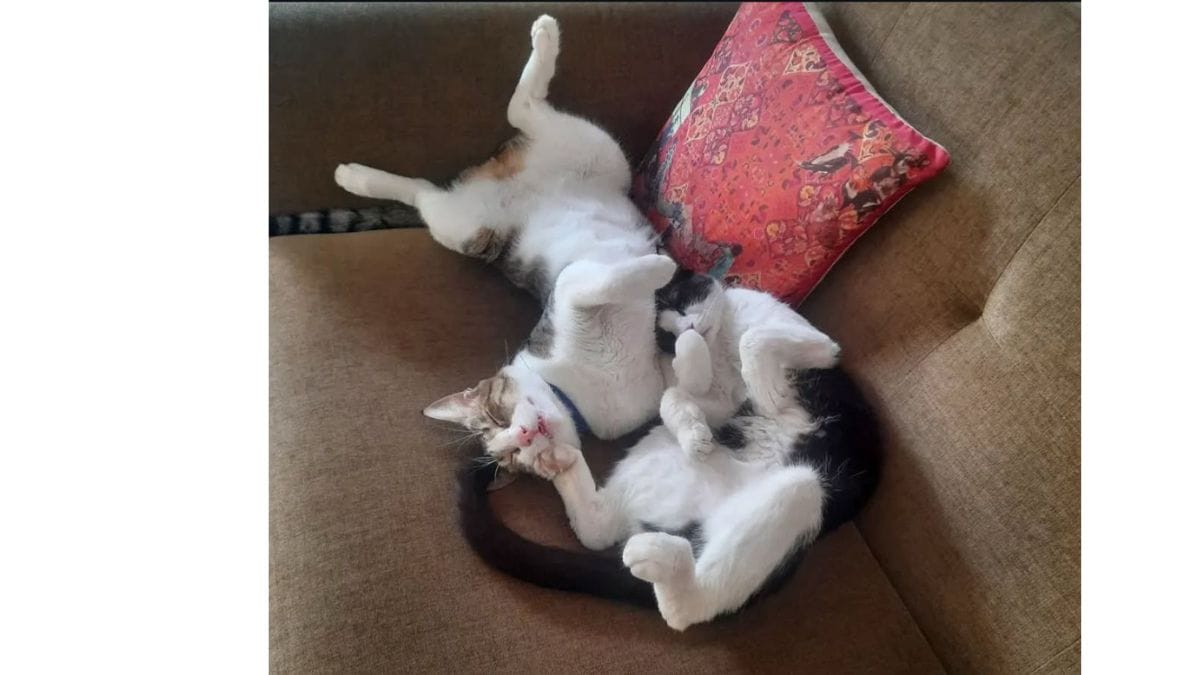
Jude once ran away. Babar was told to inform the neighbourhood cats—let them know he was missing, and they were out looking for him. She told the biggest of the lot, a tabby with Jude’s colouring. He was the leader. The rest were henchmen. Soon after, Jude returned –– completely unfazed, and immaculate as ever.
Babar admitted that she spoils her cats more than her son. When she began keeping cats as an adult, it was a challenge she was embarking on.
“Who knows? We thought that if we can raise a cat on our own, maybe we can raise a child. The cat’s already thrown up on all that’s precious to you,” she said. “It’s humbling.”
Babar, who grew up in Rawalpindi –– Pakistan is a cat country, unlike India ––has always been a cat person. There was only one decade of her life in which she didn’t own a cat, and her solution was to plan family vacations based on access to cat cafes, as a result of which Thailand became a family favourite.
Cat parents aren’t your ordinary breed of pet lovers. They’ve grown accustomed to silence, space, and a creature whose hilarity is often overlooked. Cats are complex beings who can’t be tied down to stereotypes.
“I don’t think any other animal is programmed in such a weird fashion. Contrary to what a large number of people think, they can be so affectionate and needy,” said Teesta Rawal, 26, also a generational lover of cats. Her grandparents fed cats outside their home in Kolkata, and her mother feeds strays in Mumbai.
The pandemic descended while she was in college, and she returned home to a cat who slept on her notes –– unabashedly. Rawal said it takes a certain confidence to be a cat person. Another cat-owner said it takes a certain sadism.
“Cats are meticulous and not sloppy. If something is a routine, it has to be routine. They’re more territorial and rigid about things. Ownership is more of a test because of how unpredictable they are. They’re so on their own terms,” she said.
Cats don’t bend.
Rawal and her mother Nina have four cats. And as was the case with all the cat parents ThePrint spoke to, they could whittle their personalities down to the essential. There’s an interiority to cats and parts of them remain concealed –– until, with time, they begin to reveal themselves. Much like onions.
Goofy’s vocal and affectionate, Chotu’s lazy and indolent, Bunny has a penchant for destruction and Arjun’s aggressive. The Karan to his Arjun still lives in the same building compound.
Also read: No kids please, we’re pet parents—why some Indian couples choose cats & dogs over babies
Material for memes
“We turn to ludicrous gags and anthropomorphic cat memes in the throes of violent upheaval and historical impasse”
In Devapriya Roy’s Cat People, an anthology of the travails of cat-people and the felines who’ve shaped them, writer Varun Grover begins his essay with a truism.
“In the last decade, the internet has genuinely helped the growth and wild popularity of only three things—fascism, cryptocurrency, and cats.”
The internet has corners for everything, no matter how obscure. There’s an ardent, devoted audience for hippopotamus videos. Thailand’s Moo Deng is only the tip of the iceberg. But cats have an almost ubiquitous following on the internet.
“Cats are difficult puzzles. They challenge you. And they have a host of very strange behaviours. And this becomes great material for memes,” said Grover. “They’re such ambiguous creatures.”
Grover is “crazy in love with” his Jaaneman, and so she was given a name befitting of his feelings. His second cat, Dilbar, is supposedly the “Milind Soman of cats” –– a “perfect hunk”, according to Grover. The third, Chhena Poda, simply enjoyed the Odiya dessert.
Puss in Boots, from the animated film series Shrek, is a cat known for his bravado. He wears a cowboy hat and wields a sword. However, his most viral avatar, the gif that was everywhere, was what, much to every cat’s chagrin, was an exhibition of puppy-dog eyes.
More recently, when US President Donald Trump accused migrants of eating American pet cats, a different genre of cat videos went viral. This time of armed cats in bullet-proof vests, a cat military. It’s yet another testament to how pliant they are –– like play-dough, scrunched into various shapes to fit social contexts.
“We turn to ludicrous gags and anthropomorphic cat memes in the throes of violent upheaval and historical impasse,” as per an essay by Maggie Hennefeld.
Feline literature
The hold cats have over popular culture stretches beyond memes—they have a small but growing literary imprint. In Wildings, author Nilanjana Roy builds a world that belongs to the cats of Nizamuddin –– which she accessed first through her cat, Mara. Roy writes that she waited for someone to write the “secret lives of cats”, but no one did. She was left with no choice but to inhabit it herself.
Cats, in India, have also never been known for their depictions in paintings. BN Goswamy, however, chronicles the handful of exceptions.
“Cats have a way of telling you what they are, and what they care about: their world is nocturnal, filled with scent trails like highways and alleyways, and while they can be loners, they are also part of a close web and network of relationships, between the toms, the queens and the kittens,” said Roy, referring to the process of translating the animal into the human. But cats are remarkably clear communicators, she said. All she did was turn that into speech.
Hemali Sodhi, founder of A Suitable Agency, a literary agency which represents writers, said that cats have always been part of literature. She gave the example of TS Eliot’s Cats — which also spawned the infamous film, the cat in Vikram Seth’s The Golden Gate, and Wildings.
“It takes a skilled writer to bring a cat to life on the written page, but we are seeing more appearances now than before, I think. And that’s true of non-human characters—animals—in stories, in general,” she said. “I think we’re beginning to discover how rich our stories become when we include and involve other beings.”
Cats, in India, have also never been known for their depictions in paintings. BN Goswamy, however, chronicles the handful of exceptions. One such work is Jamini Roy’s Two Cats Holding a Stolen Large Prawn. The duo is set against a grid, two cats tailored to fit the signature that’s emblematic of Roy.
“Why two cats, and not one? Is there a reference somewhere to the old tale of two cats unable to agree on sharing the catch equally, ultimately landing up with a monkey who cheats them out of their spoil?” Goswamy wrote.
After being cheated, Mehri and Sehri, the two cats in question, say: “‘If only we had not quarrelled among ourselves, we would not be hungry now.”
There’s a reservoir of myths and stories to tap into. And while most of them aren’t positive, or even known for featuring cats — Goswamy’s book proves that cats have always been on the sidelines of Indian life. The house cat isn’t elevated to larger-than-life proportions through its folklore, like the tiger is, but to say it doesn’t exist is a colossal disservice.
Tenali Rama is a common fixture in the tales that are woven into childhood memories. The advisor to a king in the Vijayanagar Empire once called for a cat and a cow to provide it with milk, to be placed in every household, as the kingdom was facing an onslaught of cats. They grew fat and inert with excess, with one complaining its tongue had been burnt on hot milk. All the while, rats continued to wreak havoc on people’s lives.
There are no tales of loyalty, of unwavering devotion. Cats don’t exist to bolster human life, to make matters easier for them.
Gingers, Persians & breeders
Feline medicine is not a specialisation in India, and many vets wind up treating cats as “small dogs”.
At Crown Vet, an upscale clinic in Gurguram, 50 per cent of patients are felines. However, the pet-care industry has long been dominated by dogs, and so, doctors are playing catch-up.
“Vets are learning because we have to meet the demands of the consumer. People have more cats, and so they [vets] need to become familiar,” said Dr. Vanya Lalljee, head vet. She added that there has been a tremendous shift toward cat ownership.
Bibigul was misgendered by his vet in South Delhi. He was male, not female—much to Babar’s surprise.
Feline medicine is not a specialisation in India, and many vets wind up treating cats as “small dogs”. They also aren’t immune to the plague of trends, and the various inequalities that are commonly spoken about among communities of dog rescuers.
A squished nose, a mass of fur, and an expression that’s permanently frozen in grumpy. Persian cats are currently all the rage, with many breeders advertising on Facebook, Instagram, and even on OLX.
“St. Bernards blew up at one point in India, so did pugs after the Vodafone ad. Now, Persian cats have,” said Dr. Lalljee. “They’re being bred rampantly –– though they suffer from heart disease and kidney disease. People aren’t breeding selectively, and so you’re seeing [as vets] so many more Persians.”
Cat owners are also less likely to abandon their Persians, according to shelter managers. Friendicoes’ Cat Mahal, a cattery in Gurugram, is filled with cats luxuriating in stuffed castles, cats that are barely visible because they’re so deep in the sofa, and gingers waiting for a leg to rub up against. But there’s not a single Persian.
Breed fixation is not the only way that cat ownership is coming to mirror dog ownership. There’s also a burgeoning cat-care industry run by the cat-obsessed. Krishanu started Clumsy Bumsy, a gourmet cat food brand, because his Shifu was suffering from diarrhoea and he wanted to get to the root of the problem. He took a feline nutrition course and learned that Shifu needed to eat cleaner and more organic food.
“I started working on my own recipes and saw a huge change. His issues were completely resolved. His health was better, his fur was shinier, and he was more active,” said Krishanu. After he and his wife adopted their second cat in 2021, they realised they could scale up. However, they said they “didn’t want money”, just wished fewer cats to suffer.
Contrived as it may sound, it’s true. They love dogs, but they’re “cat parents”, according to him. When the couple sees a cat, something immediately shifts. And if they see an injured cat –– their world stops. On its website, Clumsy Bumsy offers packets of chicken, tuna, mackerel, and quail. The meat is described as “human grade”, and it’s not the tinned food usually on offer for cats.
At Heads Up For Tails, arguably India’s biggest pet store, cats are yet to receive the same kind of premium service. But it appears to be on its way. There’s a brocade cat scarf, and a mix of toys, including a rather large jute ball which comes with its own wooden setup. The brand is also going to launch a new line of cat food.
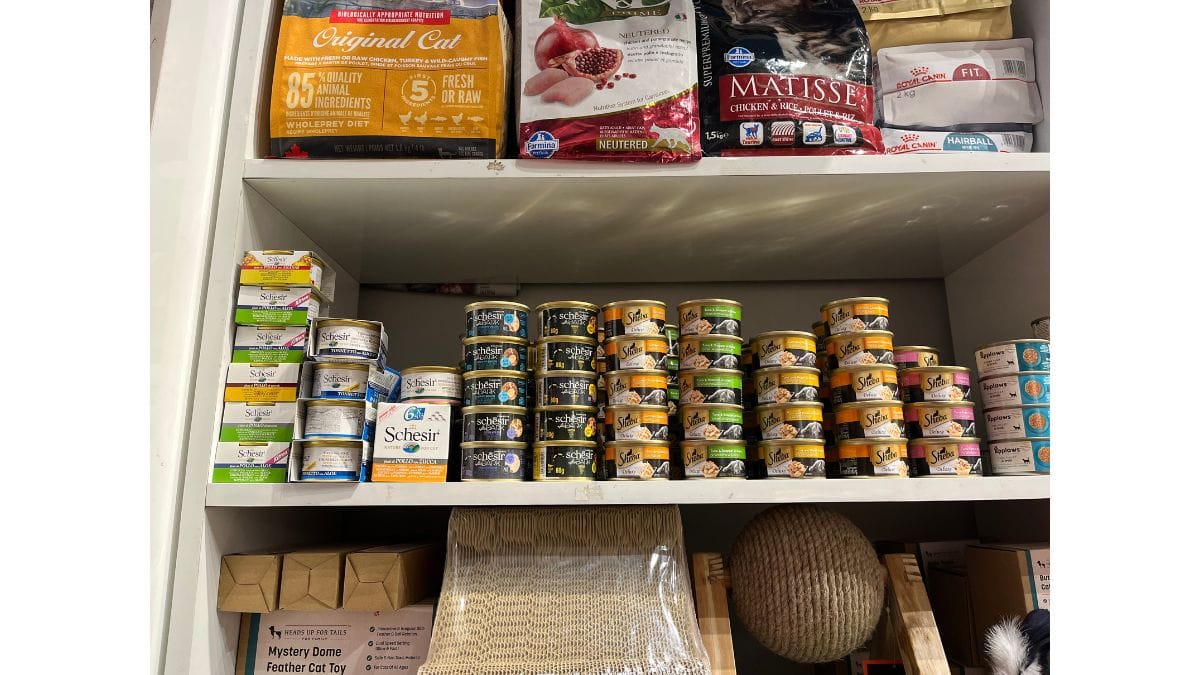
Nina Rawal doesn’t bring her cats any fancy toys. She once gave Bunny a fishing rod, gifted to him by a friend — and not only did he chew it, he swallowed it. They’re happy playing with pieces of string and stray feathers. But when it comes to food, cats are fussy eaters.
“Even among the brands of cat food, they’re fussy and only like what they like,” she said.
For all the devotion, the carefully curated analyses of personalities and the adoration–– the returns aren’t what you’d expect.
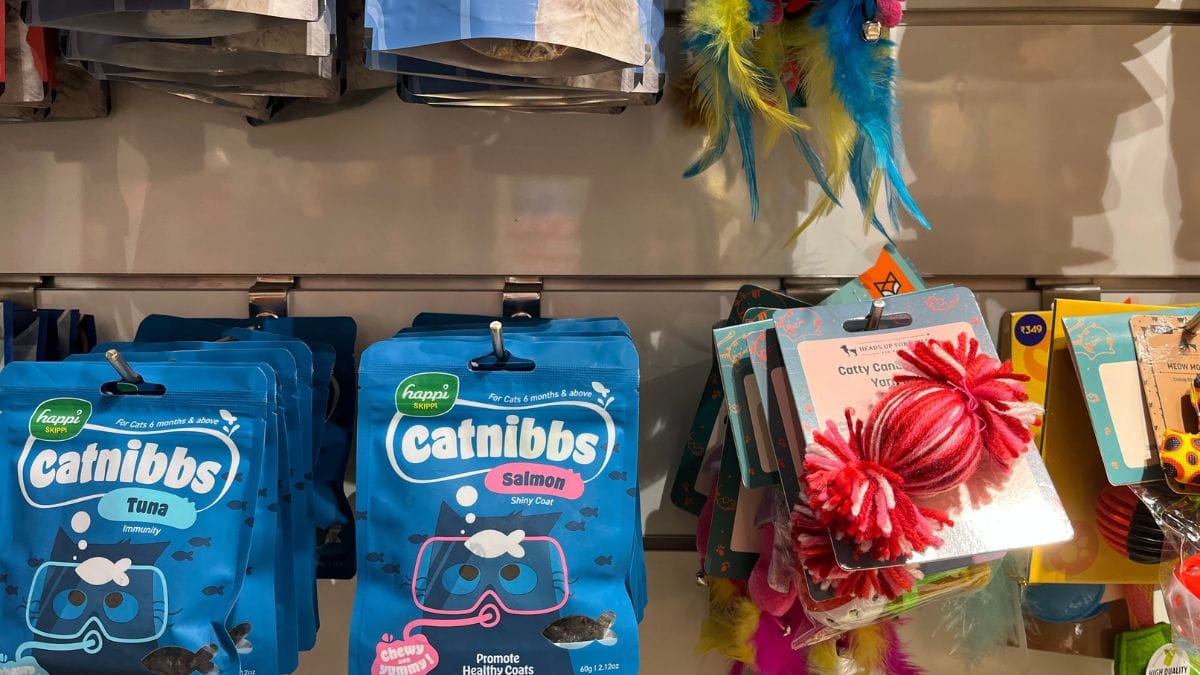
“They show love by deeming to stay with me,” said Babar simply.
A quality companion
Cats have a bent of mind that seeps into every aspect of how they operate. For instance, it’s far more challenging to train a cat than a dog.
In urban India, dogs have long been privileged over cats. The image of upper middle class aspiration once included a golden retriever, or a dalmation, or more recently, a French bulldog. Portrayals of pets in Bollywood films, limited as they are, have consisted almost entirely of dogs. There’s the boxer narrator in Dil Dhadakne Do (2015), and Tuffy in Hum Saath Saath Hain (1999).
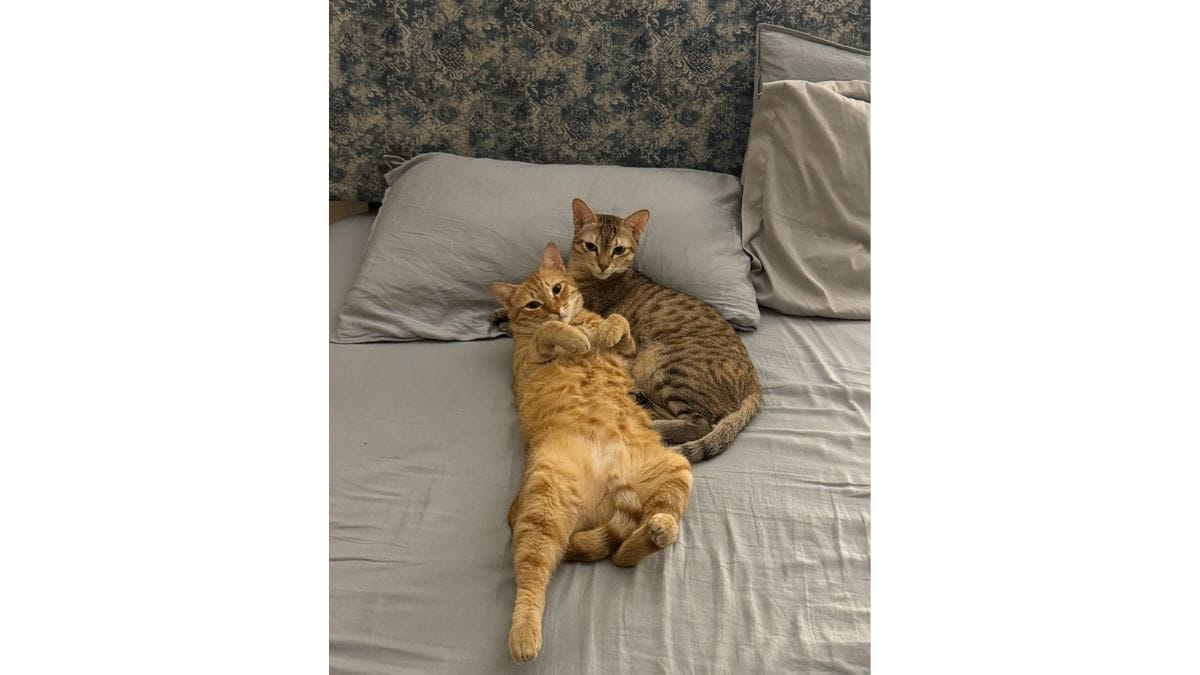
While cats are yet to pervade through the minds of the Indian film industry, and images of aspiration might be too much for cats to tackle, they’ve slid into our homes –– surreptitiously. As a new generation enters the workforce, they’re contending with job crises, a culture that prioritises remote work, increasingly alienating cityscapes, and inflation. Throwing a labrador into the mix, or even an indie in desperate need of a home, isn’t always an option. And that’s where cats enter.
“I definitely knew I didn’t have the bandwidth for a dog. They’re far more emotionally dependent,” said Nidhi Kulkarni, a researcher now based in Mumbai. “I thought a cat would be an easier option.”
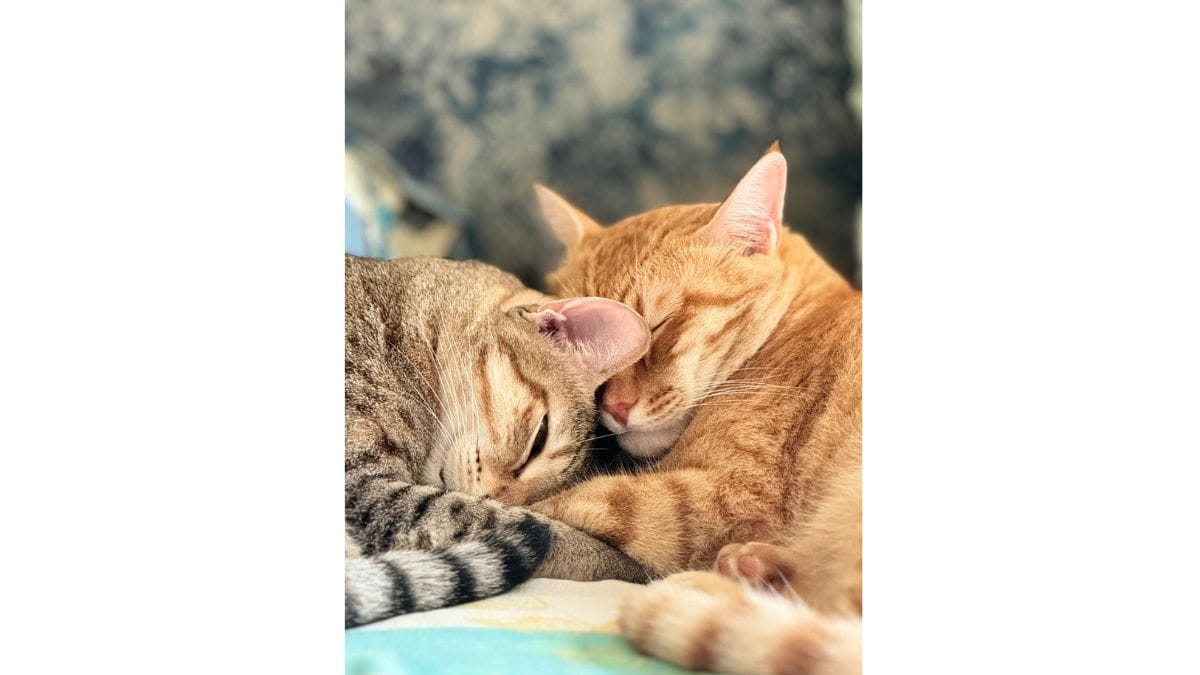
She got her cats, Mosu and Cheeto, during the pandemic. While she said that it wasn’t a decision necessarily brought on by it, being at home all the time did make things easier.
“It didn’t seem like so much work because we [she and her flatmate] were home all the time.”
Nina Rawal, who facilitates foster homes and adoptions for cats, also attested to the stereotypes that continue to drive home.
“People have this impression that cats don’t love you like dogs do. But each of them has an individual personality and shows love in their own way. I try to change people’s minds [about cats],” she said.
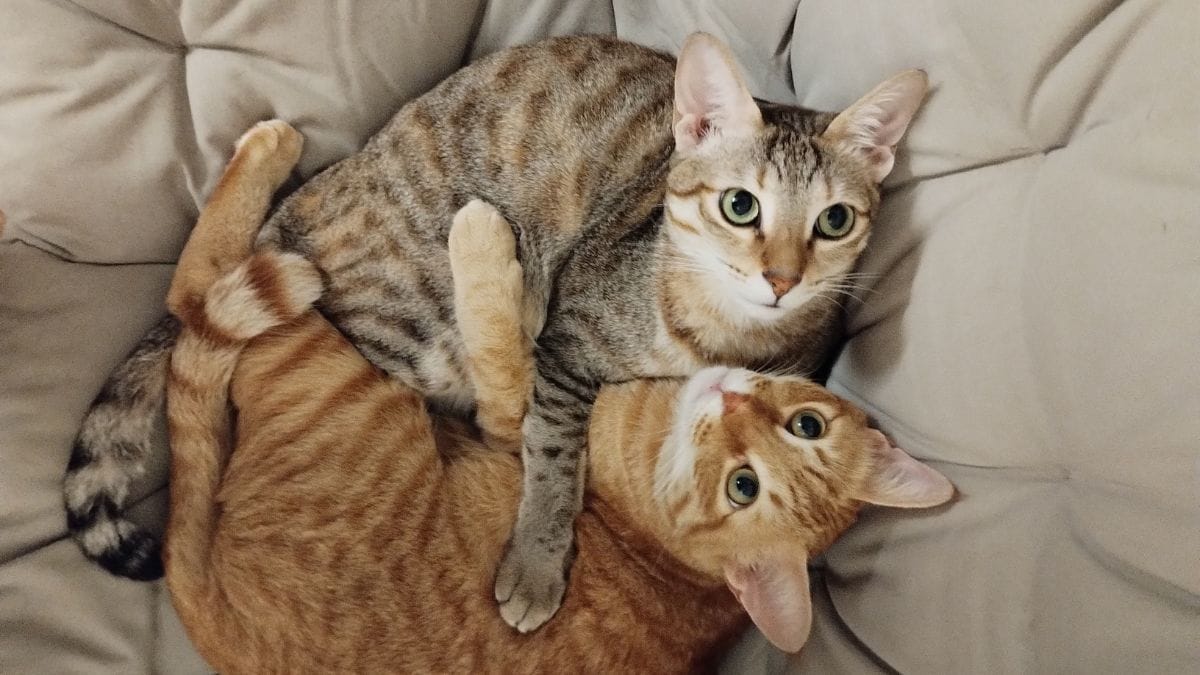
It took time, but Kulkarni is now used to this different brand of affection. They can be aloof, but there’s a discreet beauty to the quality of companionship.
“I wasn’t specifically a cat person, I just enjoyed animals,” she said. “And it’s more like living with a human being, in the sense that you have to adjust to their temperament.”
It’s not just testimonies of lovers and converts. Cats have a bent of mind that seeps into every aspect of how they operate. For instance, it’s far more challenging to train a cat than a dog. And experts say this is because of a difference in motivation. The thought of pleasing their owners pushes dogs, while cats are propelled by self-interest.
But this doesn’t change the attitude of their owners, who, respectful of their boundaries as they are, treat their pets as they would their children. Kulkarni’s Mosu and Cheeto are currently children of an amicable divorce, as she and her former flatmate no longer share an apartment. They might just have to split time between Bengaluru and Mumbai.
“It’s shared custody,” said Kulkarni.
(Edited by Ratan Priya)



